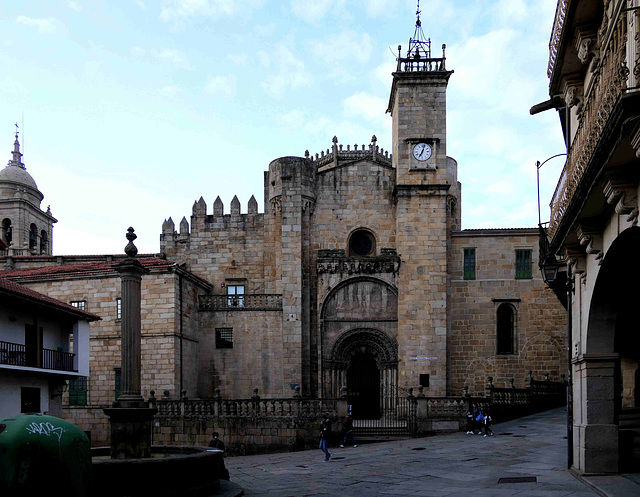Ourense - Catedral de Orense
Ourense - Catedral de Ourense
Ourense - Catedral de Ourense
Ourense - Santa Eufemia
Ourense - Santa Eufemia
Ourense - Santa Eufemia
Ourense - Santa Eufemia
Ourense - Sombrerería La Lucha
Ourense - Catedral de Ourense
Ourense - Catedral de Ourense
Ourense - Catedral de Ourense
Ourense - Catedral de Ourense
Ourense - Catedral de Ourense
Ourense - Catedral de Ourense
Ourense - Catedral de Ourense
Ourense - Catedral de Ourense
Ourense - Catedral de Ourense
Ourense - Catedral de Ourense
Ourense - Catedral de Ourense
Ourense - Catedral de Ourense
Ourense - Catedral de Ourense
Ourense - Catedral de Ourense
Ourense - Museo Catedralicio
Ourense - LAVABLUE
Bande - Santa Comba
Bande - Santa Comba
Bande - Santa Comba
Bande - Santa Comba
Bande - Santa Comba
Bande - Santa Comba
Bande - Santa Comba
Crasto - Mosteiro de S Martinho
Portugal
Soutelo - Nossa Senhora do Alívio
Braga - Theatro Circo
Braga - Turismo
Braga - Machado
Braga - Sé de Braga
Braga - Sé de Braga
Braga - Sé de Braga
Braga - Sé de Braga
Guimarães - Igreja de São Miguel do Castelo
Guimarães - Paço dos Duques de Bragança
Rates - São Pedro de Rates
Mosteiro de Leça do Balio
Location
Lat, Lng:
You can copy the above to your favourite mapping app.
Address: unknown
You can copy the above to your favourite mapping app.
Address: unknown
See also...
Keywords
Authorizations, license
-
Visible by: Everyone -
All rights reserved
-
64 visits
Ourense - Catedral de Orense


The Romans were already here and utilised the hot springs. They built a bridge over the river, the Ponte romana, creating an important communication route, which was of course secured by fortifications.
In the 5th century, Ourense became the seat of a bishopric. As the capital of the kingdom of the Suebi, Ourense flourished in the 5th and 6th centuries. The Suebi king Teodomiro († 570) built the first cathedral in Ourense after converting from Arianism to Catholicism.
Constant raids by the Moorish conquerors and the Normans devastated the city to such an extent that it remained almost uninhabited for several centuries. It was rebuilt in 1071 under King Sancho II of Castile. In the following centuries, the city gained importance as a bishop's see, but also as a trading centre. In the 13th century, Ourense was an important trading centre in Galicia due to its geographical location and its large Jewish community. The economic decline began after the expulsion of Ourense's Jews in 1492 by the Catholic Monarchs. In the centuries that followed, Ourense's importance steadily declined.
The earliest cathedral appears to have been a church dedicated to Santa María la Madre. In 550, the Suevian king Chararic built a second church here dedicated to St Martin of Tour. The cathedral was however repeatedly destroyed over the centuries by the Moors and the Northmen who invaded the city. Today's building was constructed as a Romanesque church in the 12th and 13th centuries. Gothic additions followed until the early 16th century. The consecration of the high altar was already in 1188.
In the 5th century, Ourense became the seat of a bishopric. As the capital of the kingdom of the Suebi, Ourense flourished in the 5th and 6th centuries. The Suebi king Teodomiro († 570) built the first cathedral in Ourense after converting from Arianism to Catholicism.
Constant raids by the Moorish conquerors and the Normans devastated the city to such an extent that it remained almost uninhabited for several centuries. It was rebuilt in 1071 under King Sancho II of Castile. In the following centuries, the city gained importance as a bishop's see, but also as a trading centre. In the 13th century, Ourense was an important trading centre in Galicia due to its geographical location and its large Jewish community. The economic decline began after the expulsion of Ourense's Jews in 1492 by the Catholic Monarchs. In the centuries that followed, Ourense's importance steadily declined.
The earliest cathedral appears to have been a church dedicated to Santa María la Madre. In 550, the Suevian king Chararic built a second church here dedicated to St Martin of Tour. The cathedral was however repeatedly destroyed over the centuries by the Moors and the Northmen who invaded the city. Today's building was constructed as a Romanesque church in the 12th and 13th centuries. Gothic additions followed until the early 16th century. The consecration of the high altar was already in 1188.
Nicole Merdrignac has particularly liked this photo
- Keyboard shortcuts:
Jump to top
RSS feed- Latest comments - Subscribe to the comment feeds of this photo
- ipernity © 2007-2025
- Help & Contact
|
Club news
|
About ipernity
|
History |
ipernity Club & Prices |
Guide of good conduct
Donate | Group guidelines | Privacy policy | Terms of use | Statutes | In memoria -
Facebook
Twitter

Sign-in to write a comment.